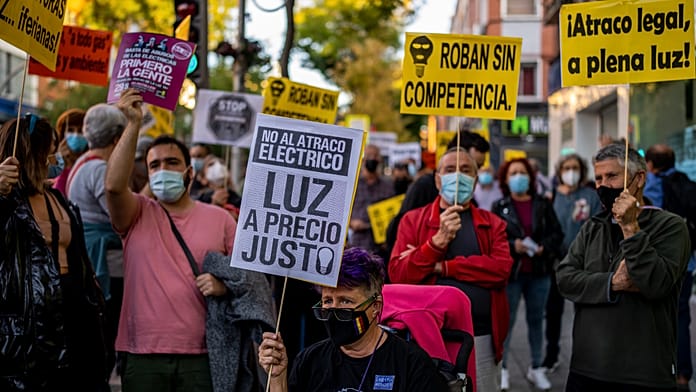In 1796, a young Napoleon Bonaparte took command of the French Army of Italy. The army was low on morale and poorly equipped, but his brilliant leadership led to victory after victory. The army reached Bologna in June of that year, where Bonaparte was welcomed as a liberator.
Late in 1796, he created the Cispadana Republic, which included Bologna. It was the first Italian State to use the three coloured flag that was the basis of today’s national flag of Italy.
 The flag of the Cisalpine Republic was the first to use the three colours of today’s Italian flag. (Wikimedia)
The flag of the Cisalpine Republic was the first to use the three colours of today’s Italian flag. (Wikimedia) In 1797, this short-lived nation was combined with areas to the north to form the Cisalpine Republic, with Milan as the capital. Like its predecessor, this Republic was a client state of France with a heavy French military presence.
 General Bonaparte proclaiming the Cisapline Republic at Milan on 9 July, 1797 by Louis Lafitte. (National Napoleonic Museum of Aix Island)
General Bonaparte proclaiming the Cisapline Republic at Milan on 9 July, 1797 by Louis Lafitte. (National Napoleonic Museum of Aix Island)In 1802, with further added territory, the Cisalpine Republic became the Italian Republic, and in 1805, it was transformed into the Kingdom of Italy, with Napoleon as its King.
 An Italian coin from 1805 showing Napoleon as King of Italy wearing the iron crown of Lombardy. (Wikimedia)
An Italian coin from 1805 showing Napoleon as King of Italy wearing the iron crown of Lombardy. (Wikimedia)French revolutionary ideas brought many changes to Italy. In Bologna, this included the creation of a city cemetery (see my post La Certosa – Bologna’s Fascinating Monumental Cemetery), a system of registering births, marriages and deaths, civil marriages, the suppression of monasteries and even for a few years the use of the French Republican Calendar. It also included reforms of the postal system that required accurate street naming and house numbering.
 Napoleon Bonaparte exiling monks from Bologna ca. 1796. (Archivio Comunale di Bologna )
Napoleon Bonaparte exiling monks from Bologna ca. 1796. (Archivio Comunale di Bologna )Street names of Bologna
Similarly to other European cities, the names of Bologna’s streets developed over time from common usage. For example, an aggregation of people engaged in a particular trade gave rise to street names such as Via Falegname (Street of the Carpenters) and Via dei Orefici (Goldsmith Street).
Other examples are places with distinguishing characteristics such as water mills (Via delle Moline), churches, and prominent family residences.
A number of city maps were published showing street names such as the one below from 1636 by Giovanni Luigi Valesio. However there was no street signage.
 Detail from a Bologna street map from 1636. (Biblioteca Comunale Dell’Archiginnasio)
Detail from a Bologna street map from 1636. (Biblioteca Comunale Dell’Archiginnasio) Bologna street listings from a 1636 map.(Biblioteca Comunale Del’lArchiginnasio)
Bologna street listings from a 1636 map.(Biblioteca Comunale Del’lArchiginnasio) Bologna street listings from a 1636 map.(Biblioteca Comunale Del’lArchiginnasio)
Bologna street listings from a 1636 map.(Biblioteca Comunale Del’lArchiginnasio)Name plaques
In 1801, under Napoleonic influence, street signs were introduced in Bologna. They were called ‘lapidette’ which is perhaps best translated as ‘plaques’. The names were taken from various street maps published over the previous centuries, in particular from one published in 1712.
Following the fall of Napoleon, Bologna returned to being part of the Papal States, ruled from Rome. After an 1859 French and Italian victory over Austro-Hungary in Northern Italy, a successful plebiscite to join the new Kingdom of Italy was held in Bologna.
 Luigi Carlo Farini presenting King Victor Emmanuel II with the annexion papers for the Emilia Region. (Carlo Bossoli, Wikimedia)
Luigi Carlo Farini presenting King Victor Emmanuel II with the annexion papers for the Emilia Region. (Carlo Bossoli, Wikimedia)Subsequently, many streets and squares were renamed to commemorate reunification, and in particular leading figures in the struggle. In Bologna, these included Luigi Zamboni, Ugo Bassi, Massimo Azeglio and Luigi Carlo Farini.
As a result of these changes, many of the lapidette were no longer correct. Also, there had been problems with a census held in 1861 due to imprecise street naming and building numbering. As a result, in 1873 the Department of Statistics began a five year process of replacing the old Napoleonic lapidette.
Some signs from this time indicating the previous street names can be seen around Bologna. The example below is in Via Marsala, renamed after the town in Sicily where Garibaldi and his thousand landed in 1860. The word “già” on the sign in this context means “formerly”.
 A sign indicating the former name of Via Marsala. (P. Granville)
A sign indicating the former name of Via Marsala. (P. Granville)The surviving plaques
Today only a handful of the Napoleonic lapidette survive. Some are in lanes that had become private by 1873 and so avoided removal. Others were covered over with plaster and have come to light after restoration work.
Vicolo de’ Facchini
In the 1870s, Vicolo de’ Facchini was a closed off private dead end lane. As a result, the 1801 lapidetta survived at the Via Marsala end of what is now a public laneway.
 Vicolo de’ Facchini at the corner of Via Marsala. (P. Granville)
Vicolo de’ Facchini at the corner of Via Marsala. (P. Granville) The 1801 lapidetta “Via de’ Facchini” with its modern equivalent. (P. Granville)
The 1801 lapidetta “Via de’ Facchini” with its modern equivalent. (P. Granville)Vicolo Felicini
Vicolo Felicini also become a private lane early in the 19th century and returned to being public in 1963. The gate that formerly closed off the lane is still in place.
 Vicolo Felicini with the Napoleonic sign visible above the gate. (P. Granville)
Vicolo Felicini with the Napoleonic sign visible above the gate. (P. Granville) The sign for Vicolo Felicini is partly obscured by the gate support. (P. Granville)
The sign for Vicolo Felicini is partly obscured by the gate support. (P. Granville)Vicolo Trabisonda
Vicolo Trabisonda was closed as a public thoroughfare in 1853 and reopened in recent years. There is a surviving plaque at each end of the lane although at the time of writing, one was covered up due to work underway on a building.
The sign has the original name “Trabisonda”, a city on the Black Sea whose Turkish name is Trabzon. The laneis now called “Via Trebisonda”.
 One of two surviving lapidette in Vicolo Trebisonda. (P. Granville)
One of two surviving lapidette in Vicolo Trebisonda. (P. Granville)Broglio de’ Musselini
A lane off Strada Maggiore became private some time after 1801 and remains so today. It has a lapidetta “ Broglio de’ Musselini” that is visible from the footpath. Broglio was a term used for a lane or pathway near a vegetable garden.
 The private laneway near 24 Strada Maggiore with a surviving 1801 street name sign. (P. Granville)
The private laneway near 24 Strada Maggiore with a surviving 1801 street name sign. (P. Granville) A surviving lapidetta in the lane – ‘Broglio de’ Musselini’.(P. Granville)
A surviving lapidetta in the lane – ‘Broglio de’ Musselini’.(P. Granville)Borgo Salamo
A section of Via Farini was originally called Borgo Salamo. The term ‘Borgo’ was used in Bologna for streets where there was a distinct collection of houses separated from others. “Salamo” was possibly the name of a family living here.
Borgo Salamo was one of a combination of streets that were renamed “Via Farini” to honour Luigi Carlo Farini, an influential figure in the reunification of Italy, as mentioned above.
A lapidetta for Borgo Salamo came to light after a layer of plaster was removed during restoration work. It’s located on the wall of the popular Cafe Zanarini.


Bologna’s original building numbers
In 1794, a few years before the arrival of Napoleon, a system of building numbering was introduced in Bologna. Assigning numbers on a street by street basis was not possible as at the time Bologna lacked an accurate street naming system. Instead, building numbers were allocated across each of the city’s four quarters.
This system is still in use in Venice. For example, buildings in the Sestiere of San Marco are numbered from 1 to 5562. Venice has 6 districts, called ‘sestieri’ in Italian.
 The last number of the Sestiere of San Marco in Venice – 5562. (Wikimedia)
The last number of the Sestiere of San Marco in Venice – 5562. (Wikimedia)As Bologna’s medieval quarter boundaries were imprecise, new simplified quarters were defined based on major churches.
Initially, the plan was to colour code the building numbers according to the quarter, for example, yellow for San Giacomo. This approach ceased when the street name plaques described above were introduced in 1801, removing the possibility of confusion.
 Bologna’s quarters in 1794 showing the colour coding. (Openstreetmap annotated by P. Granville)
Bologna’s quarters in 1794 showing the colour coding. (Openstreetmap annotated by P. Granville)Hundreds of the old building numbers have survived. After 230 years, however, there are few with the original colouring. Many numbers were later painted in black over to improve visibility.


Unlike in Bologna today, there was no standard for building numbers, and the surviving ones show significant variation.












There are some courtyards shared between two or more buildings, with resultant multiple numbers.


In 1805, Napoleon made street numbering compulsory in Paris. A new approach was introduced with even numbers on one side of the street and odd numbers on the other. However, Bologna stuck with the numbering that had only recently been completed.
It wasn’t until 1878, with the completion of the renaming of streets described above, that the city quarter based numbering system was abandoned.


You may have seen old building numbers here and there without paying much attention, but after reading this post, you’re likely to start noticing them all over the city.
The old street signs and numbers are yet another layer of history visible when walking around the city.
© P. Granville 2025

 3 mesi fa
217
3 mesi fa
217






















